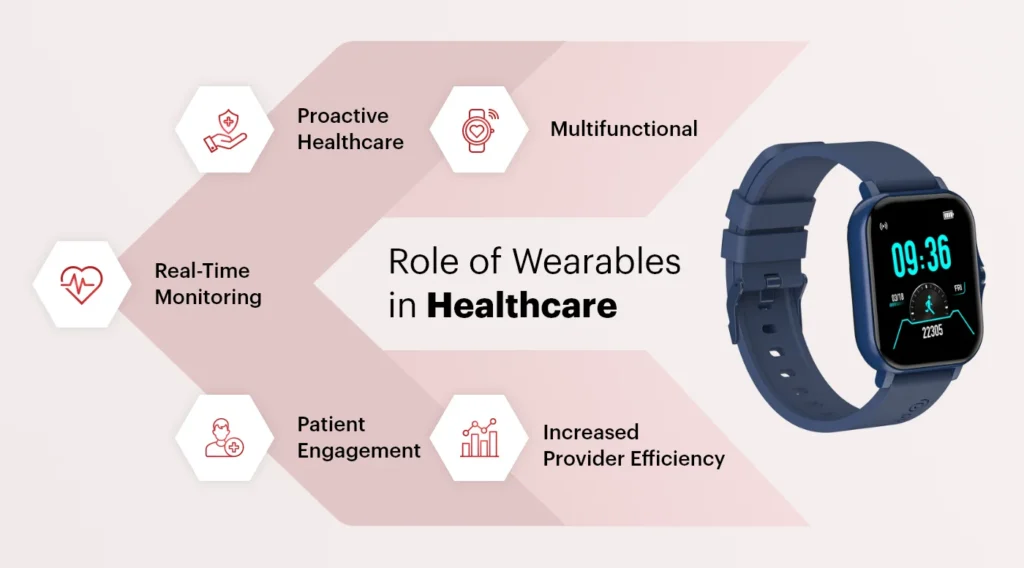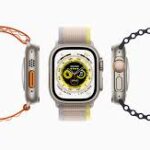
xr:d:DAFwSjMalKg:30,j:5994696647313803102,t:23101006
Wearable technology is evolving rapidly, and artificial intelligence (AI) plays a pivotal role in this transformation. AI enhances the functionality of wearable tools by enabling real-time data analysis, predictive insights, and personalized user experiences. From healthcare wearables that monitor vital signs to fitness devices optimizing workouts, AI empowers wearable tools to deliver smarter and more impactful solutions.
This blog explores how AI powers wearable devices, provides examples of AI-enabled wearables, categorizes the types of AI applications, and highlights the future of this groundbreaking synergy.
Discover how AI is revolutionizing wearable tools with advanced health monitoring, fitness optimization, and personalized user experiences. Learn about the top AI-powered wearables and future trends in wearable technology.
Applications of AI in Wearable Tools

1. Health Monitoring and Diagnostics
AI-equipped wearables monitor health metrics, predict potential health risks, and even diagnose conditions in real time.
- Example: The Apple Watch Series 10 uses AI to detect irregular heart rhythms and alerts users about potential atrial fibrillation.
- Benefit: Early detection of health issues like heart attacks or sleep apnea can save lives.
2. Fitness and Wellness Optimization
AI enhances fitness tracking by providing personalized exercise routines and analyzing workout effectiveness.
- Example: Fitbit Charge 6 leverages AI to recommend rest days or intense workouts based on recovery rates.
- Highlight: Fitness tools now analyze stress levels, sleep cycles, and even hydration needs.
3. Mental Health Insights
AI-driven wearables focus on mental well-being by analyzing stress patterns, mood, and brain activity.
- Example: The Muse Headband tracks brain activity and uses AI to guide meditation and stress relief.
- Trend: Mental health wearables have grown by 30% in 2024, with increasing emphasis on emotional well-being.
4. Workplace Productivity
Wearables equipped with AI optimize workplace safety and productivity.
- Example: AI-powered helmets in construction sites monitor fatigue levels and environmental hazards.
- Use Case: Smart glasses provide workers with augmented reality (AR) instructions, reducing errors and increasing efficiency.
5. Personalized Healthcare for Chronic Diseases
Wearables use AI to manage chronic conditions like diabetes and hypertension.
- Example: Dexcom G7 Continuous Glucose Monitor analyzes blood sugar trends and sends alerts for potential health risks.
- Highlight: AI-driven insulin pumps can automatically adjust dosages, reducing patient dependency.
Types of AI Applications in Wearables
1. Predictive Analytics
Wearables use AI to forecast health events, such as heart attacks or stress spikes, based on user data.
- Example: Predictive models in fitness trackers warn users of overexertion risks.
2. Natural Language Processing (NLP)
NLP allows wearables to process voice commands and offer conversational AI experiences.
- Example: Smartwatches with Alexa or Google Assistant provide hands-free interaction.

3. Image Recognition
AI in AR glasses enables real-time object detection for navigation or industrial applications.
- Example: Workers using Microsoft HoloLens can identify equipment parts via AI-powered AR overlays.
4. Gesture Control
AI processes gestures for touchless device interaction, enhancing usability.
- Example: The Google Jacquard Jacket allows users to control music with a swipe on the sleeve.
Examples of AI-Powered Wearables
1. Apple Watch Ultra

AI Feature: Tracks advanced health metrics and provides personalized fitness guidance.
Use Case: Detects falls and provides emergency alerts.
2. Whoop 4.0
- AI Feature: Uses machine learning to analyze strain and recovery.
- Benefit: Optimizes athletic performance with tailored recommendations.
3. Oura Ring Gen 4

AI Feature: Tracks sleep, heart rate variability (HRV), and readiness scores.
Highlight: AI provides detailed insights into recovery and performance optimization.
4. Meta Quest Pro
- AI Feature: Real-time AR/VR integration for immersive environments.
- Use Case: Enhances collaboration and gaming with intelligent rendering.
How AI Enhances Wearable Tools

- Personalization
- AI tailors recommendations to user behavior and needs.
- Example: A fitness tracker suggesting a low-impact workout based on recovery rates.
- Accuracy
- Machine learning algorithms analyze data with higher precision than traditional tools.
- Example: AI detecting abnormal ECG patterns missed by basic monitoring.
- Convenience
- NLP-enabled wearables allow users to interact via voice, streamlining usability.
- Example: Hands-free calls and reminders via AI assistants.
Advantages of AI in Wearables
1. Real-Time Decision Making
Wearables provide instant alerts and actionable insights, such as notifying users of abnormal heart rates.
2. Improved Health Outcomes
By leveraging predictive analytics, AI-driven wearables enable preventative care, reducing hospital visits.
3. Seamless Integration with IoT
AI connects wearables with other IoT devices, enabling a smart ecosystem for homes and workplaces.
Challenges of AI-Powered Wearables
- Data Privacy
- Collecting sensitive health data raises concerns about breaches and misuse.
- Example: Regulatory bodies are implementing stricter GDPR-like rules for wearables.
- Battery Life
- Advanced AI processing drains device power faster, demanding innovative energy solutions.
- Cost
- Premium AI wearables remain expensive, limiting accessibility for some users.
Future of AI in Wearable Technology
The fusion of AI and wearable tools is expected to redefine industries beyond healthcare and fitness.
- Healthcare Innovations
- Devices with AI could predict illnesses years in advance based on genetic and environmental factors.
- Metaverse Wearables
- AR and VR wearables powered by AI will integrate more deeply into virtual spaces for gaming, education, and business.
- Implantable Wearables
- Next-gen wearables may be implanted into the body for continuous monitoring and seamless data tracking.
AI is the driving force behind the evolution of wearable tools, enabling them to become smarter, more intuitive, and indispensable. From tracking health metrics to enhancing workplace productivity, the applications are endless. As AI technology continues to advance, wearable tools will play an even greater role in our lives, transforming the way we live, work, and interact with technology.
Recommended Resources
- Explore the latest AI-powered wearables on kbtimes.tech
Frequently Asked Questions (FAQ) About How AI is Powering Wearable Tools
1. How does AI enhance wearable tools?
AI enhances wearable tools by enabling real-time data analysis, predictive insights, and personalized user experiences. It uses machine learning to process data collected by sensors and adapts functionality based on user behavior. For example, AI-powered devices can detect abnormal heart rhythms, predict stress patterns, and suggest health interventions.
2. What are some examples of AI-powered wearables?
Examples of AI-powered wearables include:
- Apple Watch Series 10: Offers advanced health tracking features like ECG monitoring and fall detection.
- Whoop 4.0: Analyzes recovery and workout intensity using AI.
- Dexcom G7: Monitors blood glucose levels for diabetic patients.
- Muse Headband: Tracks brain activity to guide meditation sessions.
3. What are the main applications of AI in wearable technology?
AI has several applications in wearable tools, including:
- Health Monitoring: Detecting heart issues, tracking sleep, and managing chronic diseases.
- Fitness Optimization: Providing customized workout plans and real-time performance insights.
- Mental Health: Monitoring stress and offering guided meditation through wearables like Muse.
- Workplace Productivity: Enhancing safety and efficiency with AR-enabled wearables like Microsoft HoloLens




1 thought on “HOW AI IS POWERING WEARABLE TOOLS”